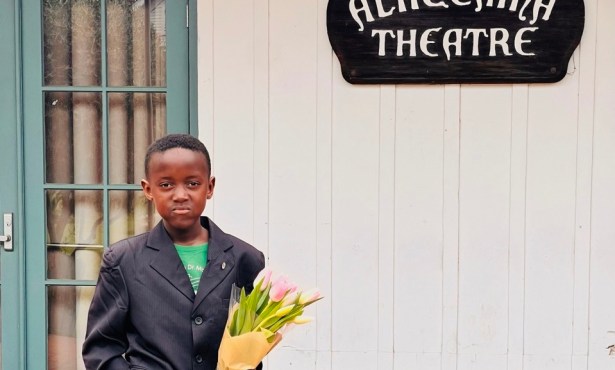Review: Blue Is the Warmest Color
Adèle Exarchopoulos and Léa Seydoux star in a film written by Ghalia Lacroix and Abdellatif Kechiche and directed by Kechiche.

Audiences may naturally fixate on a few salient and sensationalistic aspects of the strikingly fine Blue Is the Warmest Color, the toast of the Cannes International Film Festival (and winner of the Palme d’Or). Yes, it’s got an NC-17 rating; yes, it’s three hours long; and yes, the story is primarily about a lesbian love affair, replete with frank, anti-coy sex scenes. But very early into director Abdellatif Kechiche’s remarkable filmic achievement, the external buzz and controversy antenna raising subsides, and we’re led with a strangely personal connection into the life of our heroine, Adèle.
Based on a graphic novel, Blue Is the Warmest Color is essentially a coming-of-age and sexual-awakening tale about Adèle (Adèle Exarchopoulos), a French teenager grappling with her sexual identity and preferences. Eventually, she falls into a passionate love affair with a slightly older and more confident lesbian woman, played by Léa Seydoux. (Fittingly, these actresses shared in the Palme d’Or glory.) Their attraction and emotional heat is palpable, to a degree we rarely see in film, as is the pain as love takes its darker turns. Somehow, the sexual encounters — a vital part of the romantic/sexual story at hand — are balletic and orgasmic things of beauty, never pornographic, and sans the usual leering or foggy lensing.
Cinematically, in general, the pace, texture, and perspective of the film has a languid flow which makes the epic length feel just right. Sofian El Fani’s camera work relies heavily on close-ups (and yes, both actresses’ natural loveliness makes the extended scrutiny rewarding in itself) and a naturalistic though not overly hair-splitting cinema vérité–like point of view. Emotional highs or bracing points of conflict appear in an organic way, not telegraphed or framed with conventional dramatic ploys of movie clichés. Music is kept to a minimum, but can be illuminating, as when the rapturous adagio of Mozart’s “Clarinet Concerto” sneaks into the soundtrack just as the lovers are moving from heightened curiosity to consummation.
In the end, what makes Blue Is the Warmest Color one of the year’s best films is its unique and personalized spin on the ageless challenge of a convincing love story, whatever the gender particulars or polarities.



